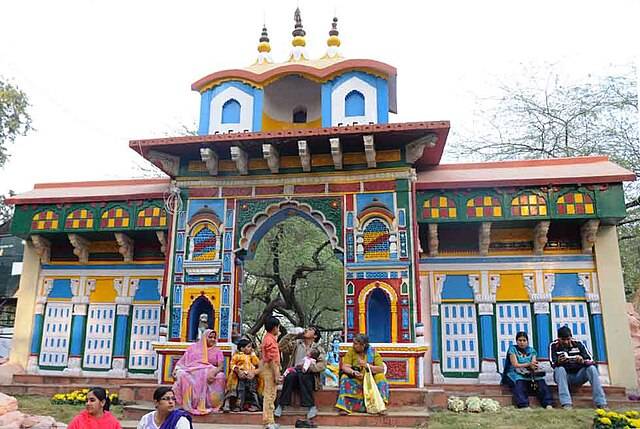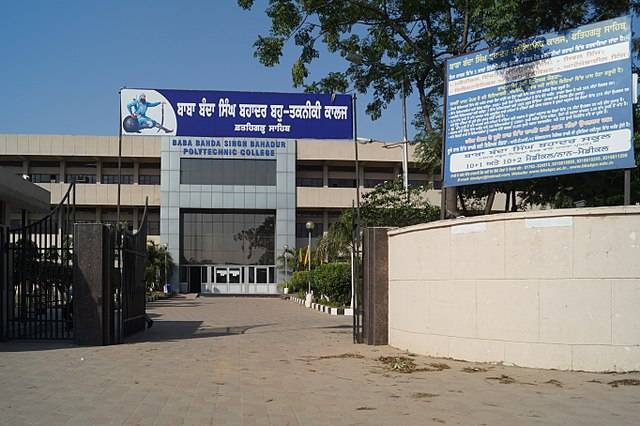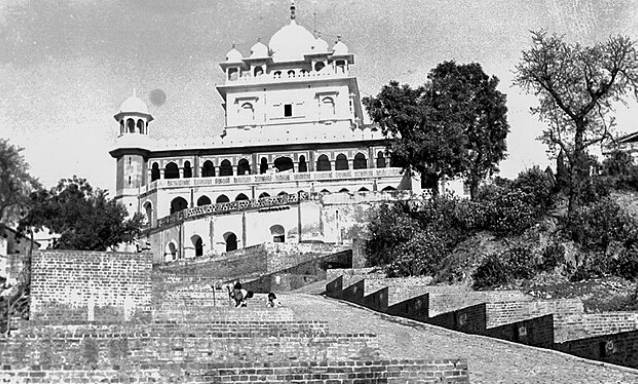Exploring the Cultural and Historical Riches of Haryana and Punjab
Top Places to Visit in Haryana
Surajkund
Location: Faridabad district, 21 km (13 miles) from Delhi.
Contact: Haryana Tourism, Chanderlok Building, 36 Janpath, New Delhi (011) 2332 4910.

This historic reservoir, constructed between the 10th and 11th centuries by King Surajpal of the Rajput Tomar dynasty, is a popular picnic destination today. The original embankment of stone terraces designed to trap rainwater still exists. Nearby, a well-equipped artificial lake offers boating facilities. Surajkund comes alive during the first two weeks of February with the Surajkund Crafts Mela, featuring artisans from across India. The event showcases a variety of crafts, including Rajasthani puppets, Orissa’s bell metal works, and Gujarat’s mirror work, all within a vibrant carnival atmosphere.
How to Reach
Nearest Railway Station: Faridabad Railway Station (approx. 10 km away).
From the Station: Local taxis and buses are available for a short ride to Surajkund.
Panipat
Location: Panipat district, 85 km (53 miles) north of Delhi.
Contact: Information available locally.
Panipat, the site of three decisive battles that changed Indian history, is situated on a flat, dusty plain with a history tracing back to the epic age. The town’s core features several interesting bazaars, and a 16th-century tomb shrine dedicated to the Sufi saint Bu Ali Shah Qalandar. Today, Panipat is renowned for its handloom products, particularly carpets and blankets.
How to Reach
Nearest Railway Station: Panipat Junction (approx. 2 km away).
From the Station: Autos and rickshaws are readily available to take visitors into the town center and historical sites.
Chandigarh
Location: Chandigarh district, 238 km (148 miles) from Delhi.
Contact: Interstate Bus Terminal Sector 17, Chandigarh (0172) 272 1178.
The capital city of both Haryana and Punjab, Chandigarh was designed in the early 1950s by the famous architect Le Corbusier. It is considered India’s first planned city post-independence, laid out on a grid with 57 sectors. Key areas include the Capitol Complex, the main shopping area in Sector 17, and a vast Rose Garden. Noteworthy attractions include the Chandigarh Museum and Art Gallery, Rock Garden, and Sukhna Lake, which are all popular with tourists.
How to Reach
Nearest Railway Station: Chandigarh Railway Station (approx. 11 km away).
From the Station: Buses, taxis, and auto-rickshaws are available for the short drive to the city center and its attractions.
Patiala
Location: Patiala district, 63 km (39 miles) southwest of Chandigarh.
Contact: Information available locally.
Patiala, once a princely state, is known for its grand architecture and vibrant culture. Key attractions include the Qila Mubarak, a fort built in 1763, the Old Moti Bagh Palace with its Indo-Saracenic style, and the Baradari Gardens. The city is famous for its traditional crafts like hand-crafted leather shoes (jutties) and phulkari fabric.
How to Reach
Nearest Railway Station: Patiala Railway Station (approx. 4 km away).
From the Station: Local transport options, including autos and taxis, are available to reach the city’s main attractions.
Pilgrimage Destinations in Punjab
Sirhind
Located in the Fatehgarh Sahib district, Sirhind is 55 km (34 miles) west of Chandigarh. The town, once a major settlement in North India between the 16th and 18th centuries, served as the capital of the Pathan Sur sultans. The ruins of their massive fort can still be seen today. Sirhind was also a favorite halting place for the Mughal emperors on their annual journeys to Kashmir.

Sirhind’s name, which means “Frontier of India” in Persian, was given by Mahmud of Ghazni after he expanded his empire into this area in the 11th century. The town boasts several Mughal-era buildings in the Aam Khas Bagh area, now a government-run tourist complex. One of the notable structures is the Royal Hamam, a complex for hot and cold baths that utilizes water drawn from nearby wells through an intricate system of hand pulleys. Nearby, visitors can find the ruins of Shah Jahan’s double-storeyed palace, Daulat Mahal, and the better-preserved Sheesh Mahal, with walls still bearing traces of the original tilework and decorative plaster.
North of Aam Khas Bagh stands the white Fatehgarh Sahib Gurdwara, surrounded by bright yellow mustard fields that bloom in January. The gurdwara was built in memory of the martyred sons of the tenth Sikh guru, Gobind Singh, who were walled in alive by the Mughal emperor Aurangzeb in 1705 for refusing to convert to Islam.
Adjacent to the gurdwara is the Rauza Sharif, the tomb-shrine of the Sufi saint and theologian, Shaikh Ahmad Faruqi Sirhindi. Also known as Mujaddad-al-Saini (“The Reformer of the Millennium”), his magnificent octagonal tomb, built in the 16th century, is covered in glazed blue tiles and is an important pilgrimage site for Muslims.
Anandpur Sahib
Anandpur Sahib, in the Roopnagar district, is 73 km (45 miles) north of Chandigarh. Guarded by the Shivalik Hills and a ring of imposing forts, Anandpur Sahib is a complex of historic Sikh gurdwaras. It was here that the severed head of the ninth guru, Tegh Bahadur, was brought to be cremated, a site now marked by the Sisganj Sahib Gurdwara.

The gurdwara also marks the place where the tenth and last guru, Gobind Singh, founded the Khalsa or “Army of the Pure” in 1699, along with five volunteers to help him defend the faith. The Kesgarh Sahib Gurdwara, built to commemorate this event, is one of the four principal seats (Takhts) of the Sikh religion, alongside Amritsar, Nanded in Maharashtra, and Patna in Bihar. A week-long celebration was held in April 1999 to mark the 300th anniversary of the Khalsa.
Surrounding Anandpur Sahib are several forts that played a crucial role in Sikh history. Lohagarh Fort served as the armor of the Sikh Khalsa army, Fatehgarh Fort guarded the route between Delhi and Lahore, and Taragarh Fort protected against attacks from the hill states to the north.
Every year, Anandpur Sahib comes to life during the Hola Mohalla festival when thousands of devotees gather to watch the Nihang Sikhs, descendants of the gurus’ personal guards, display their formidable martial and equestrian skills.
Kapurthala
Kapurthala, in the Kapurthala district, is 165 km (103 miles) northwest of Chandigarh. This former princely state owes its extraordinary architectural heritage to Maharaja Jagatjit Singh, an eccentric ruler who was passionate about French culture. In 1906, he commissioned a French architect to build a palace modeled on Versailles, incorporating elements from Fontainebleau and the Louvre.
The resulting structure, named the Elysée Palace (now the Jagatjit Palace), is surrounded by gardens adorned with stone statuary and fountains. The palace is now a school, but its ornate interiors and Renaissance-style painted ceilings are open to the public. Maharaja Jagatjit Singh later commissioned the construction of the Buena Vista Hunting Lodge, inspired by Spanish architecture.
Another impressive sight in Kapurthala is the town’s Moorish Mosque, inspired by the grand Qutubiya Mosque in Marrakesh. It was designed by yet another French architect employed by Jagatjit Singh, with its inner dome beautifully painted by Punjabi artists.
Amritsar
Amritsar, in the Amritsar district, is 217 km (135 miles) northwest of Chandigarh. Founded in 1577 by the fourth Sikh guru, Ram Das, Amritsar was built on a site donated by the Mughal emperor Akbar. The city’s most famous landmark is the Golden Temple, the holiest shrine of the Sikh community.
The temple complex, a city within a city, is entered through the northern gateway, known as the Darshani Darwaza, which also houses the Central Sikh Museum. The museum displays paintings, coins, manuscripts, and arms, providing a vivid picture of Sikh history. The main shrine, the golden-domed Hari Mandir, is surrounded by the Amrit Sarovar (“Pool of Nectar”), after which the city is named.
Several holy and historic sites line the Parikrama (marble pathway) that encircles the Amrit Sarovar, including the Dukh Bhanjani Ber, a tree shrine said to have miraculous healing powers, and the Athsath Tirath, representing 68 of the holiest Hindu pilgrim shrines.
The Akal Takht, the seat of the Sikh religious order, was constructed between 1589 and 1601 by the sixth guru, Guru Hargobind. The upper floors were added by Maharaja Ranjit Singh. Each day, the Holy Book of the Sikhs, the Guru Granth Sahib, is carried from the Akal Takht to the Hari Mandir at daybreak, where it is opened for the reading of the day’s message (Vag).
The temple echoes with the music of ragis (musicians) singing verses from the Holy Book. Every visitor entering the Hari Mandir, including non-Sikhs, is given a dollop of sweet prasad (holy offering). No visit is considered complete without a meal at the Guru ka Langar, a free kitchen where all visitors are fed a simple meal of dal-roti (lentil curry and bread). This kitchen, run by volunteers, can feed 10,000 people a day and serves as a symbol of the caste-free, egalitarian society that the Sikh gurus strove to create.
The Jallianwala Bagh, a short distance from the Golden Temple, is the site of the infamous 1919 massacre, where hundreds of unarmed demonstrators were gunned down by British forces. The event helped hasten the end of British rule in India, and a memorial now stands at the east end of the garden.
Another notable site near Amritsar is the Wagah border, just 9 km (6 miles) from the city, where a daily flag-lowering ceremony takes place, attracting crowds of spectators from both India and Pakistan.





